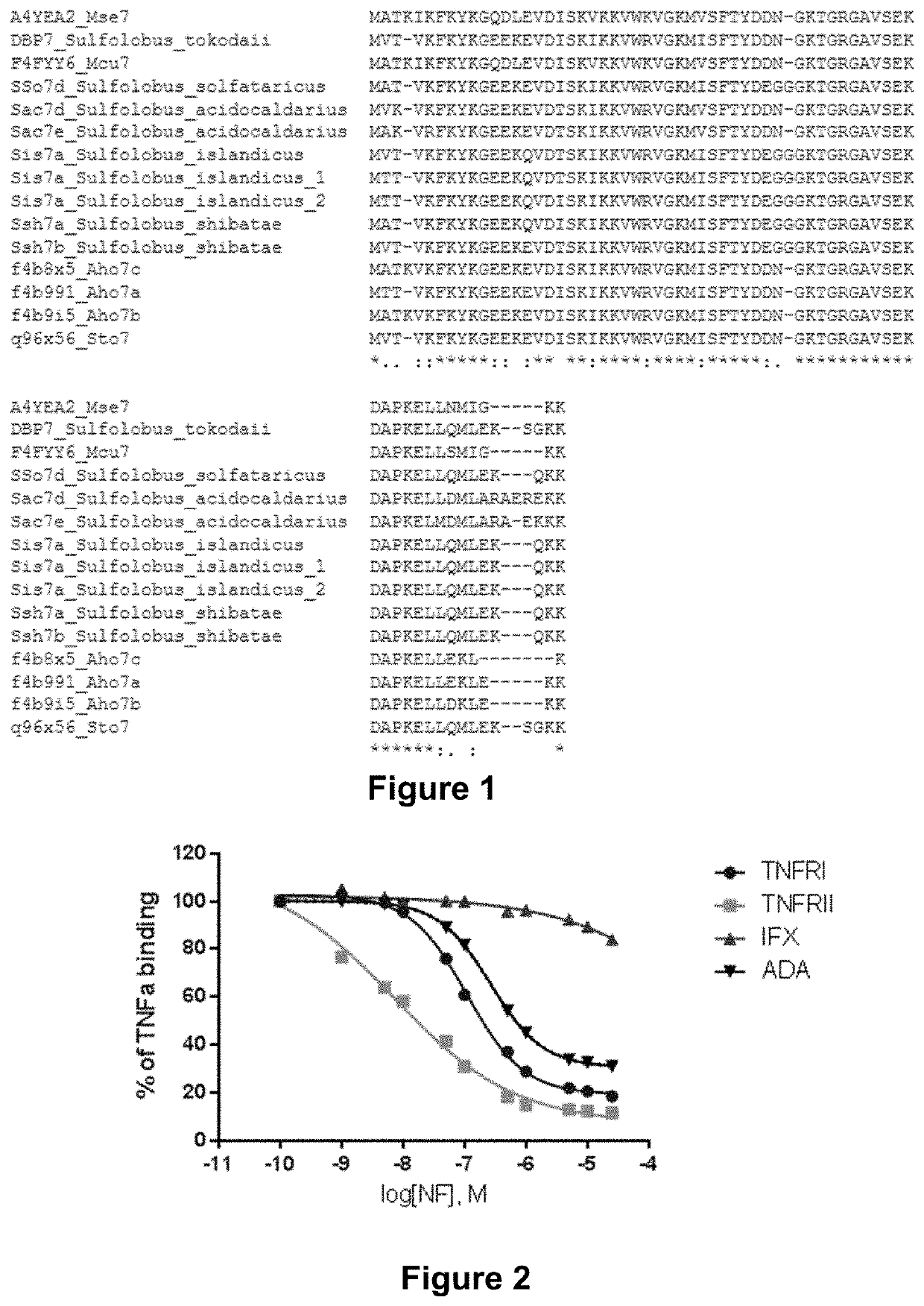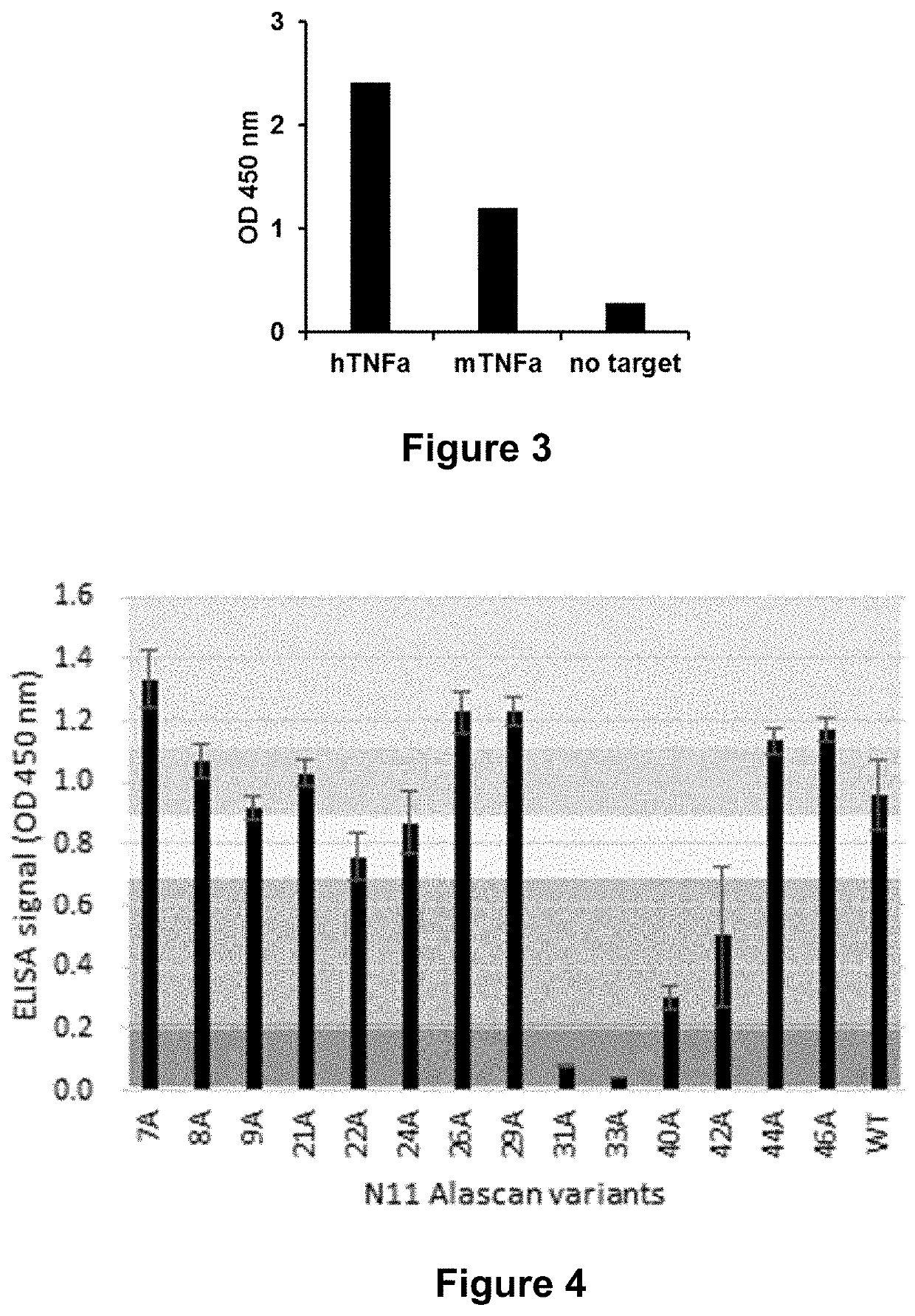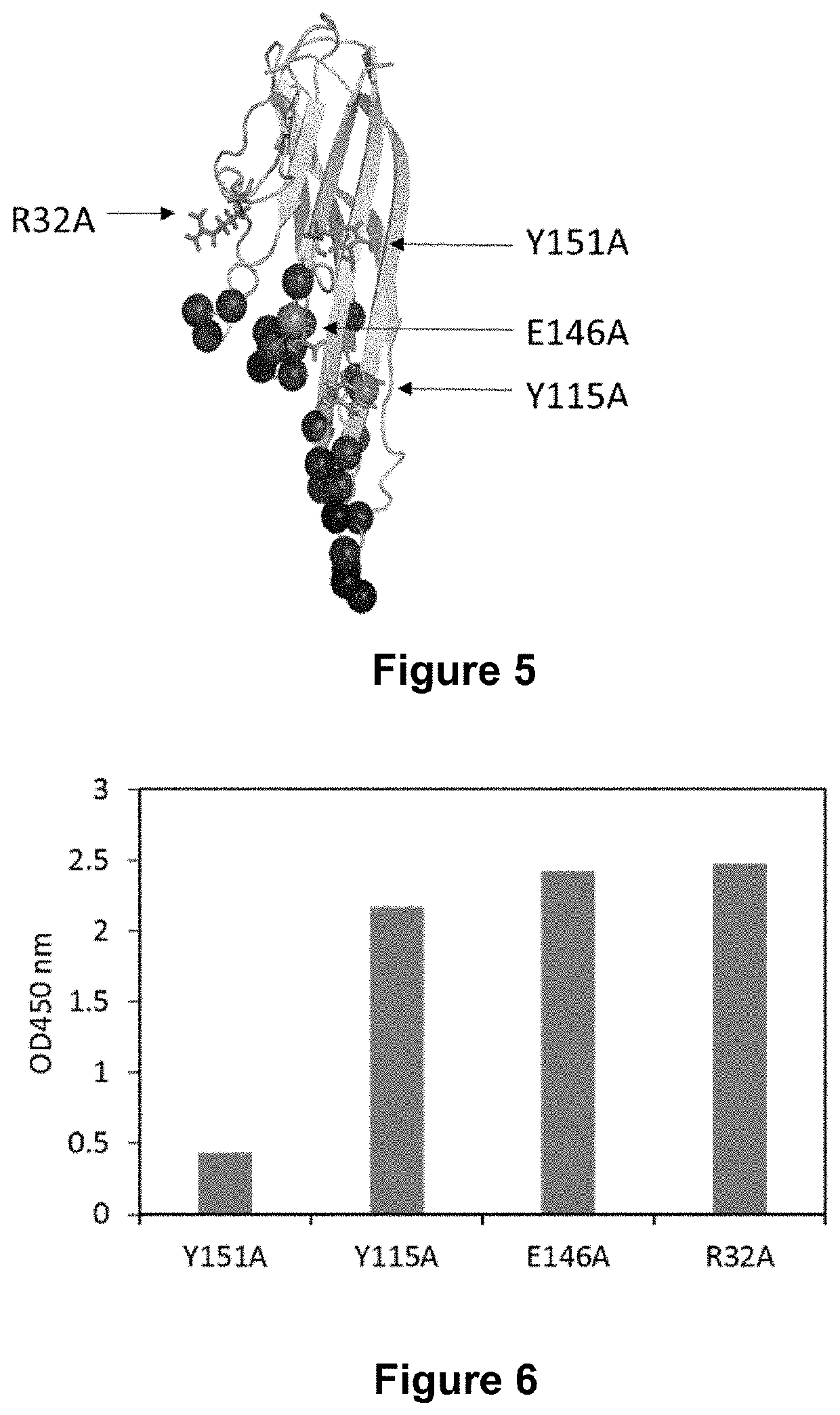Binders for inhibiting formation of multimeric proteins
a multi-protein, binding technology, applied in the direction of animal/human peptides, bacteria peptides, antibody mimetics/scaffolds, etc., to achieve the effect of preventing bone loss
- Summary
- Abstract
- Description
- Claims
- Application Information
AI Technical Summary
Benefits of technology
Problems solved by technology
Method used
Image
Examples
example 1
n of a NF Against TNF or RANK Ligand
[0222]The screening was performed using a library comprising random mutations in 17 positions of the sequence of Sac7d (SEQ ID NO: 1).
[0223]The mutated positions were K7, Y8, K9, E11, K21, K22, W24, V26, M29, S31, T33, D35, T40, G41, R42, A44, and S46.
[0224]The targets were TNF-alpha and RANKL.
[0225]The targets, in the trimeric soluble form, were biotinylated and attached via biotin / avidin liaison on solid beads. They were then thoroughly washed in order to dissociate the trimers.
[0226]Screening essentially as disclosed in WO 2008 / 068637 was performed by ribosome display expression of the variants of the library and exposition to the bound targets.
[0227]For the selection and the identification of the clones, biotinylated hTNFa (R&D systems) and mTNFa (R&D systems) were used. The biotinylation was performed by incubation of a 50 μM solution of the target protein with a 5-fold molar excess of sulfosuccinimidyl-6-(biotinamido) hexanoate (Sulfo-NHS-LC...
example 2
haracterization of a Specific Variant (N11)
example 2.1
Competition with TNF Receptors and Known Binders
[0235]The ability of other binders to TNF-alpha to compete with the binding of N11 was assessed.
[0236]Briefly, the other binders (TNF Receptor I (TNFRI), TNF Receptor II (TNFRII) or two monoclonal antibodies Adalimumab (ADA) and Infliximab (IFX)) were co-incubated with N11 and the soluble TNF.
[0237]As shown in FIG. 2, binding of N11 is neutralized by TNFRI, TNFRII, and Adalimumab whereas binding of N11 is not neutralized by Infliximab
PUM
| Property | Measurement | Unit |
|---|---|---|
| pH | aaaaa | aaaaa |
| pH | aaaaa | aaaaa |
| concentration | aaaaa | aaaaa |
Abstract
Description
Claims
Application Information
 Login to View More
Login to View More - R&D
- Intellectual Property
- Life Sciences
- Materials
- Tech Scout
- Unparalleled Data Quality
- Higher Quality Content
- 60% Fewer Hallucinations
Browse by: Latest US Patents, China's latest patents, Technical Efficacy Thesaurus, Application Domain, Technology Topic, Popular Technical Reports.
© 2025 PatSnap. All rights reserved.Legal|Privacy policy|Modern Slavery Act Transparency Statement|Sitemap|About US| Contact US: help@patsnap.com



